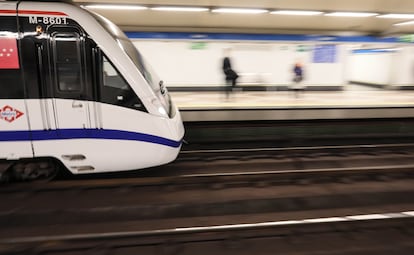Why do subway rails squeak?


Before answering this question, I want to say that it's extremely important because it addresses the problem of noise. What happens with noise , or noises, is that we get used to them, we normalize them, and we don't realize how bothersome they are, the tremendous stress they cause. I'm not just talking about this occasional noise, the subway rails you're asking about, but about all the noises we endure in our daily lives until we normalize them.
The noise of rails, subways, or trains is a rolling noise, that is, a noise originating from the roughness of both the wheel and the rail. This roughness is the source of the sound that is transmitted to both the wheel and the rail. The wheel and the rail become vibrating surfaces, which produce that sound.
The problem is well known. It has been studied since the 1970s and 1980s. It's not just a problem with the subway; it's also a problem with railways, because both modes of transport have the same configuration: metal wheel, metal rail. Even sleepers—the cross members that connect the rails—can be excited by these vibrations and become radiating elements, meaning they convert a vibration into sound waves, that sound of the question.
It's well-studied and perfectly modeled. Some improvement measures have even been proposed and implemented. For example, these rolling noises were significantly reduced when caliper brakes were replaced with disc brakes. The caliper brake rests on the wheel surface itself, which increases the roughness that causes the problem, while the disc brake doesn't act against the contact surface: that's why it's much quieter.
The wheel design has also been improved. For example, smaller wheels reduce noise. The smaller the vibrating surface, the less sound-generating it is. But since the problem is the combination of the roughness of the wheel and the rail, it's a very difficult issue to solve because that roughness will always be there; it's very difficult to modify.
If we reduce the size of the wheel, and even the size of the rail, we make the radiating surface smaller, and therefore the radiated power—the sound waves they generate—is lower. So, in general, newer trains tend to be quieter because they incorporate these small improvements.
The metro has an added problem to that of the railway: it runs inside a tunnel, which makes matters worse because the tunnel is a highly reverberant space: that is, it amplifies all the noises produced by the train, both the rolling noise you're asking about and any other noise. For this reason, the noise of the rails is much louder in the metro than in an open-air railway station.
Soledad Torres Guijarro holds a PhD in Telecommunications Engineering and is a professor at the University of Vigo . Her research focuses on audio signal processing and acoustics.
Question sent via email by Luka Pérez Lazkoz (12 years old).
Coordination and writing: Victoria Toro .
Nosotras Respondemos is a weekly science consultation, sponsored by the L'Oréal-Unesco 'For Women in Science' program and Bristol Myers Squibb , which answers readers' questions about science and technology. These questions are answered by scientists and technologists, members of AMIT (Association of Women Researchers and Technologists). Send your questions to [email protected] or via X #nosotrasrespondemos.
The advice in this clinic is general in nature and does not replace medical advice. If you have questions about your specific problem, please consult your healthcare professional.
EL PAÍS





%3Aformat(jpg)%3Aquality(99)%3Awatermark(f.elconfidencial.com%2Ffile%2Fa73%2Ff85%2Fd17%2Fa73f85d17f0b2300eddff0d114d4ab10.png%2C0%2C275%2C1)%2Ff.elconfidencial.com%2Foriginal%2Fa64%2Fc5f%2F671%2Fa64c5f67138995bd756ada205a8715cc.jpg&w=3840&q=100)